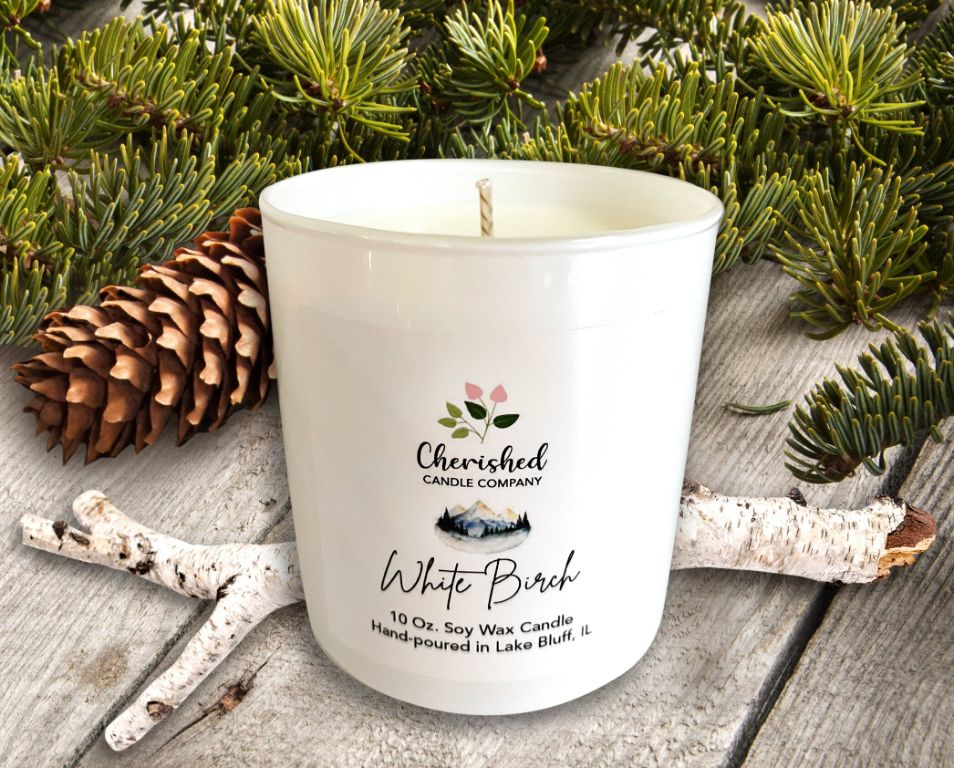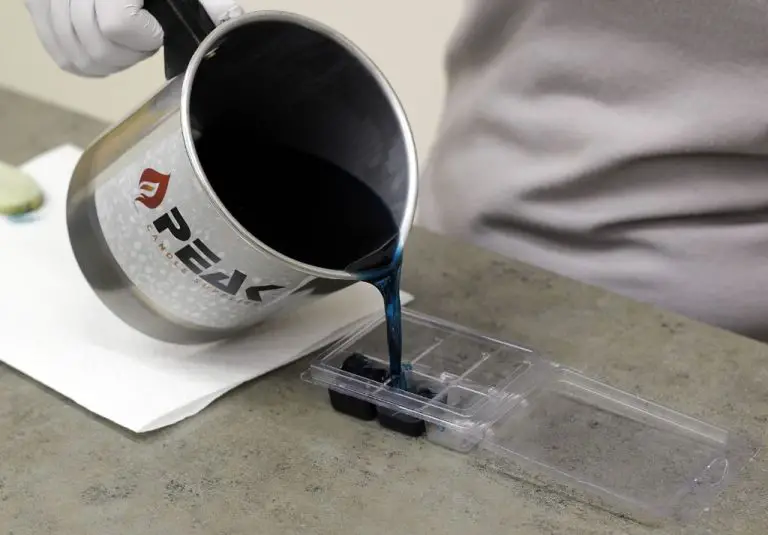Are Beeswax Candles Eco-Friendly?
Beeswax candles are made from wax produced by honey bees. Many consider beeswax candles to be an eco-friendly alternative to paraffin wax candles because beeswax is a natural product. Proponents claim that beeswax candles are sustainable, non-toxic, biodegradable, and support beekeepers and small farms. However, some argue that large-scale beeswax production can negatively impact bees and the environment. In this article, we will explore the pros and cons of beeswax candles, compare them to paraffin candles, look at beeswax production concerns, discuss other eco candle options, and provide recommendations for consumers who want an environmentally-friendly candle.
What Are Beeswax Candles?
Beeswax candles are candles made from beeswax, which is a natural wax produced by honey bees. Beeswax is secreted by worker honey bees from four pairs of glands on their abdomens and then used by the bees to build the walls of the honeycomb. It is harvested by beekeepers when they extract honey from the honeycombs.

To produce beeswax for candles, beekeepers will melt down the honeycomb in hot water or steam to separate the beeswax from the honey. The melted wax rises to the top and solidifies into blocks of pure beeswax. This raw beeswax is then filtered and purified before being used to make candles.
Beeswax candles are handmade by pouring liquid beeswax into a mold with a wick in the center. As the beeswax cools it solidifies, creating the candle. Beeswax can also be rolled into sheets, wrapped around wicks and then formed into candles. Some beeswax candles incorporate other ingredients like honey, essential oils or plant materials for color and scent.
Compared to paraffin wax candles, beeswax candles burn brighter, last longer, and emit subtle honey-like aroma. Beeswax is also biodegradable and considered a sustainable, natural alternative to paraffin.
Sources:
https://www.farmhouseonboone.com/how-to-make-beeswax-candles
https://www.scottishbeecompany.co.uk/blogs/news/how-beeswax-candles-are-made
Pros of Beeswax Candles

Beeswax candles have several benefits that make them an eco-friendly option compared to paraffin wax candles. Some of the main pros of beeswax candles are:
Made from a renewable resource – Beeswax is a natural wax produced by honey bees. Since bees can make more wax, beeswax is considered a renewable resource (1).
Biodegradable – Beeswax is a natural wax that will safely biodegrade when composted. Paraffin wax, on the other hand, is a petroleum byproduct that will not biodegrade (2).
Non-toxic – Beeswax candles burn cleaner than paraffin candles, producing no toxic fumes, smoke or soot (3). Beeswax candles are safe to burn indoors around children and pets.
In summary, the renewable, biodegradable and non-toxic nature of beeswax makes these candles an eco-friendly choice over artificial paraffin candles. Burning beeswax candles helps support sustainability while providing a toxin-free source of light and ambiance.
Sources:
(1) https://www.honshoney.com/blog/2021/10/26/4-benefits-of-beeswax-candles
(2) https://beefriendsfarm.com/blogs/bee-friends-farm-buzz/benefits-of-beeswax-candles
(3) https://creativecandles.com/blogs/blog/benefits-of-beeswax-candles
Cons of Beeswax Candles
While beeswax candles have some benefits, they also come with some downsides to consider:
Expensive – Beeswax candles tend to be more expensive than other candle options. The wax requires a lot of honeybee labor to produce, which increases the cost. According to The Buzz About Beeswax Candles, beeswax candles can cost up to 4 times more than paraffin candles.
Labor-intensive to produce – It takes worker honeybees significant time and energy to gather nectar, produce honey, and create beeswax. This labor-intensive process is part of what drives up the costs of beeswax candles.
Encourage commercial beekeeping – The demand for beeswax can lead to larger-scale, commercial beekeeping operations focused more on wax production than on bee health and welfare. Some environmental advocates argue this goes against the intended eco-friendly purpose of beeswax candles.
Beeswax vs Paraffin Candles
When choosing between beeswax and paraffin candles, there are some key differences to consider in terms of emissions, toxicity, and cost.
Beeswax candles burn cleaner than paraffin candles. According to BeeHiveCandles.com, paraffin wax produces toxic black soot as it burns, releasing compounds like toluene and benzene into the air. Beeswax does not release these harmful toxins and burns much cleaner. The natural wax also emits negative ions which help purify the surrounding air.
In terms of toxicity, paraffin is a petroleum-based product made from crude oil. It can contain known carcinogens like 1,4-dioxane. Beeswax, on the other hand, is completely non-toxic. It does not release any dangerous chemicals as it burns. Beeswax is also biodegradable, while paraffin can persist in the environment.
When it comes to cost, paraffin candles are generally cheaper to produce than 100% beeswax candles. However, many homemade and small-batch beeswax candles are competitively priced with major paraffin candle brands. The higher quality natural ingredients and cleaner burn of beeswax make it an eco-friendly option worth considering.
Beeswax Production Concerns

While beeswax candles are often marketed as an eco-friendly and natural alternative, there are some concerns around large-scale beeswax production practices. Commercial beekeeping aimed at maximizing honey and beeswax output can raise sustainability issues.
Bees raised in these industrial operations are often treated more like livestock than wild creatures. They are extensively managed, given supplements, transported across long distances, and exposed to pesticides and pathogens. This can weaken bee health and immunity over time (source).
Pesticide use is also concerning. Beeswax can accumulate chemical residues, which get released when candles are burned (source). Pesticide exposure makes bees more vulnerable to viruses, mites, and colony collapse.
Furthermore, some commercial beekeeping practices can threaten the sustainability of local bee populations. Transporting non-native species into new areas spreads pathogens. Overharvesting beeswax may outpace hive productivity (source).
When sourcing beeswax, it’s important to look for ethical, small-scale producers who prioritize bee health and environmental sustainability.
Other ‘Eco’ Candle Options
In the quest for more eco-friendly candles, some popular alternatives to beeswax include soy, palm, and coconut wax candles.
Soy Wax Candles
Soy wax is made from hydrogenated soybean oil. The soybeans used are often grown in the United States or Canada. Soy candles burn clean and have little to no scent when unscented, making them ideal for those sensitive to strong fragrances. They also burn longer than paraffin candles. However, there are some downsides. Soy wax quality can vary widely, and lower quality soy candles can produce more soot. There are also environmental concerns around pesticide use and genetically modified soybean crops. https://blog.tentree.com/a-guide-to-eco-friendly-candles/
Palm Wax Candles
Palm wax comes from the fruit of palm trees and is a natural, renewable resource. Palm wax candles burn clean and slow. However, there are major environmental concerns around palm oil production leading to deforestation, habitat loss, and climate change impacts. Sourcing palm wax sustainably is complex. The Roundtable on Sustainable Palm Oil provides some oversight. Overall, palm wax candles are not considered very eco-friendly by many environmental groups. https://blog.tentree.com/a-guide-to-eco-friendly-candles/
Coconut Wax Candles
Coconut wax comes from the oil in coconut husks and is considered one of the better eco-friendly options. Coconut trees absorb 5 times more carbon than other trees, and coconut wax production makes use of the husks that would otherwise go to waste. Coconut wax candles burn clean, though some find the scent of coconut off-putting. Look for coconut wax labeled as organic and sustainably sourced. https://www.onegreenplanet.org/lifestyle/8-eco-friendly-alternatives-to-scented-candles/
Recommendations

When shopping for eco-friendly candles, look for options made from beeswax produced through ethical, sustainable practices. Some tips:
- Look for candles labeled “100% pure beeswax” or “organic beeswax.” This indicates the wax wasn’t blended with paraffin or other additives. According to Savannah Bee, pure beeswax is the most efficient, eco-friendly choice.
- Try to buy from local apiaries or small businesses that use locally-sourced beeswax. This supports sustainable beekeeping practices in your area.
- If buying online, look for companies that are transparent about their sourcing and ethical practices, like Bee You Organics.
- Consider beeswax candles certified organic by organizations like USDA. This verifies environmentally responsible production methods were used.
- For maximum sustainability, reuse or repurpose beeswax once candles burn out. The wax can be composted or used to make new candles or wax wraps.
If you prefer not to use beeswax, soy wax or vegetable-based container candles are other eco-friendly options to consider.
The Bottom Line
When weighing the pros and cons, beeswax candles do seem to have some clear environmental advantages over paraffin candles. Beeswax is a natural wax that comes from honeybees, as opposed to paraffin wax which is a petroleum byproduct. Beeswax candles burn cleaner, brighter and longer than paraffin candles. They don’t emit harmful fumes or soot into the air. Beeswax is also biodegradable and non-toxic if ingested.
However, there are some concerns around commercial beeswax production and the health of bee populations. Over-harvesting beeswax could be detrimental. There are also other ‘eco’ candle options like soy, palm, and coconut that burn clean. Ultimately, beeswax candles, especially from small artisanal makers that practice ethical, sustainable harvesting, can be a good option for those looking to avoid petroleum products and minimize their carbon footprint through burning cleaner candles. But they may not be the only ‘green’ choice out there.
References
List sources, including peer-reviewed studies, books, government reports, reputable news articles, or other authoritative and credible material. Check that sources are credible, reliable, and free from conflicts of interest or bias where possible. For websites, ensure they are reputable organizations or authored by a qualified expert. Only utilize well-known sources with track records for accuracy and strong editorial policies. Provide full citations, URLs, and publication dates so readers can locate sources independently. Cite primary sources where available, as opposed to referencing another publication’s interpretation of that source. Confirm the information contained in secondary sources back to the primary source. Include page numbers for published books, magazines, or reports. Consult multimedia resources as well as published texts where relevant.





